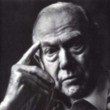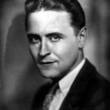NoveList provides detailed suggestions for other authors you might want to read if you enjoyed this book. Suggestions are based on recommendations from librarians and other contributors.
Unsworth and Steinbeck present thought-provoking moral issues through their compelling stories, often both educating and inspiring new insights in their readers. Steinbeck's characters may be deeper, but both authors immerse their readers in memorable situations and challenges. -- Katherine Johnson
Andre Dubus and John Steinbeck write literary fiction that resonates with empathy for the common man and display an acute understanding of American culture. Both are keen observers of life's beauty and simultaneous ugliness. -- Mike Nilsson
T. Coraghessan Boyle's fiction explores social themes that are similar to those John Steinbeck takes up in both his fiction and his nonfiction. Boyle uses more humor than Steinbeck, but their straightforward prose with vivid descriptions and believable, memorable characters will appeal to readers in similar ways. -- Katherine Johnson
John Steinbeck and Nadine Gordimer have both been seen as the conscience of their countries; their political beliefs are prominent in their fiction. Richly evoked landscapes, characters in pursuit of their dreams, man-made or governmental obstacles to their fulfillment, and spare prose are hallmarks of their writing. -- Katherine Johnson
Kent Haruf's and John Steinbeck's novels reflect a strong sense of place and the impact of the landscape on their characters, represented in straightforward but evocative writing styles. Their works portray people on the fringes of society, dramatizing and validating their struggles, though Haruf is less political than Steinbeck. -- Katherine Johnson
William Kennedy portrays of the down-and-out in Albany and might appeal to John Steinbeck's fans. Politics drives the plots of Kennedy's realistic urban stories, and the naturalistic detail in setting and characters may remind readers of Steinbeck. Like Steinbeck, Kennedy feels affection for his quirky characters and values their lives. -- Katherine Johnson
Stegner and Steinbeck share an appreciation of the land and affection for their characters. Their generally serious tales follow the lives of ordinary characters as they explore their relationships with each other and their environment. Both writers produce elegant prose, memorable images, and provocative stories. -- Katherine Johnson
Alice Walker is a compelling complement to John Steinbeck. Walker focuses on race and Steinbeck focuses on class, but both care deeply about the struggles and worth of ordinary people. -- Katherine Johnson
Proulx and Steinbeck create memorable characters, often lower-class, marginal or even misfits, portraying them with great empathy; both also write evocatively of the American landscape, especially the West. Proulx's writing style tends to be more complex and Steinbeck's is sometimes more journalistic, but both vividly convey atmosphere and mood. -- Katherine Johnson
Though John Steinbeck was a white man and Zora Neale Hurston was a Black woman, their literature explores similar territory. Hurston focuses on race and Steinbeck focuses on class, but both care deeply about the struggles and worth of ordinary people and use evocative language to depict their lives. -- Katherine Johnson
These authors' works have the appeal factors bleak, haunting, and stylistically complex, and they have the subjects "poor people," "rural families," and "brothers"; and characters that are "flawed characters," "complex characters," and "brooding characters."
These authors' works have the appeal factors bleak, haunting, and leisurely paced, and they have the genres "classics" and "southern fiction"; the subjects "rural families" and "farm life"; and characters that are "flawed characters," "sympathetic characters," and "complex characters."



































